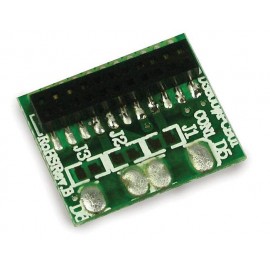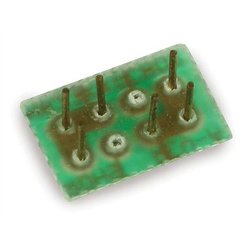Next18 is a DCC decoder standard that is smaller than existing decoders and designed to fit in to locomotives that...
Cart 0 Product Products (empty)
No products
Free shipping! Shipping
£ 0.00 Total
Product successfully added to your shopping cart
Quantity
Total
There are 0 items in your cart. There is 1 item in your cart.
Total products (tax incl.)
Total shipping (tax excl.) Free shipping!
Total (tax incl.)
Search Tips
What is a DCC blanking plate?
The blanking plate is a small circuit board that manufacturers add to the DCC socket to protect the socket that your DCC chip will go in. The blanking plate will need to be removed before the DCC chip can be inserted to allow you to run on a DCC layout.
It also creates a connexion to allow the locomotive to be used on an analogue layout.
When the blanking plate is removed you will not be able to run the locomotive at all. You need to either have a DCC chip or a blanking plate fitted for the engine to work.
Posted in: Power and control
Click here to receive the tips weekly in your mailbox. You can unsubscribe at any time.










